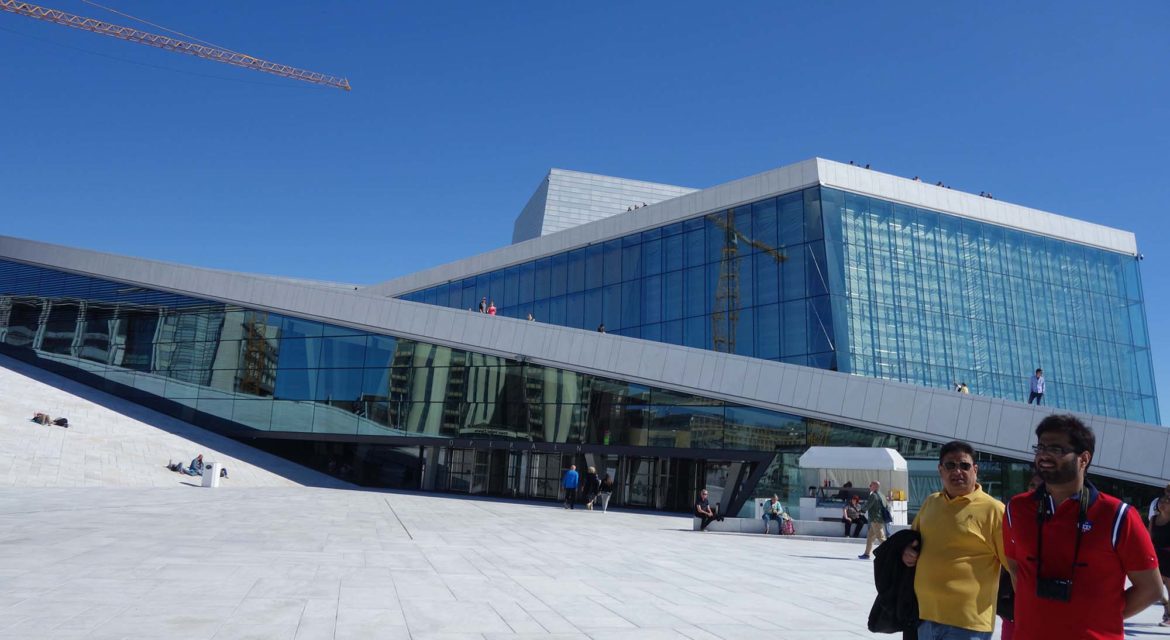 While the Sydney Opera House has become the gold standard around how a building can define a city, the Oslo Opera House has similarly helped to shape the identity of Oslo and Norway as a whole. However, its’ lack of a distinct feature to create an icon for the city like the Little Mermaid in Denmark or the Manneken Pis in Brussels showcases monumentous economic and cultural potential that is not being realized.
While the Sydney Opera House has become the gold standard around how a building can define a city, the Oslo Opera House has similarly helped to shape the identity of Oslo and Norway as a whole. However, its’ lack of a distinct feature to create an icon for the city like the Little Mermaid in Denmark or the Manneken Pis in Brussels showcases monumentous economic and cultural potential that is not being realized.
A Personal Connection with the Space
The largest cultural building constructed in Norway since the Nidaros Cathedral was built around 1300, the Oslo Opera House was completed in 2007. The structure contains 1,100 rooms and is covered with marble and white granite. Designed to make viewers think of an iceberg silently drifting in the ocean as if it were rising out of the water, the building has become a symbol for the city and nation.
The importance of the Oslo Opera House is underscored by its’ location, since it is at the very center of the city, in the middle of the Oslo fjord. It won the culture award at the World Architecture Festival in Barcelona in October 2008 and the 2009 European Union Prize for Contemporary Architecture. Meant to be a gift to the people, the entrance bridge is open 24/7 allowing visitors to walk up and onto the building, reinforcing the notion of it being a critical element of the contemporary community.
 These interactions have allowed audiences to have a personal connection with the space and the amazing views from it, but they’re limited since there are not focused on any one element. The lack of any notable distinctive features hints at the economic and cultural potential with the building that is not being realized in a way it is with structures like Cloud Gate at Millennium Park in Chicago or the Composer Statues in Stadtpark.
These interactions have allowed audiences to have a personal connection with the space and the amazing views from it, but they’re limited since there are not focused on any one element. The lack of any notable distinctive features hints at the economic and cultural potential with the building that is not being realized in a way it is with structures like Cloud Gate at Millennium Park in Chicago or the Composer Statues in Stadtpark.
Both of these spaces would similarly attract residents and visitors without these monuments, but their presence has provided people with something to focus on and helped drive their popularity. The Oslo Opera House does have some notable features, but they haven’t resonated in a way that further drives economic and cultural opportunities for growth and development.
Attempts at Distinction
 While numerous art projects were commissioned for the interior and exterior of the Opera House, few have been able to make an impression. “She Lies” is arguably the most famous of these pieces, but it sits away from the Oslo Opera House. It’s floating on the water in the fjord on a concrete platform, preventing direct interaction and engagement with the audience.
While numerous art projects were commissioned for the interior and exterior of the Opera House, few have been able to make an impression. “She Lies” is arguably the most famous of these pieces, but it sits away from the Oslo Opera House. It’s floating on the water in the fjord on a concrete platform, preventing direct interaction and engagement with the audience.
Additionally, a perforated wall panel in the lobby features hexagonal opening and is illuminated to create the illusion of melting ice. Other artists designed the shape of the pavers on the forecourt and roof, but none of these artworks and design elements have been able to focus the attention of visitors.
The most notable piece at the Oslo Opera House is likely a huge concrete pipe that resides at the front of the building and can be seen from numerous locations on the site. The amount of people that are drawn to it and visibly interact with it on a daily basis underscores both the opportunity and desire to see the Oslo Opera House create a distinctive monument.
An Opportunity for Oslo and Norway
 Building projects the size and scope of the Oslo Opera House are a major endeavor, meaning that the creation or incorporation of a monument might not be a primary concern. Nonetheless, icons like the Blarney Stone and “Allow Me” highlight how monumental pieces can define larger attractions to generate interest and attention from residents and visitors. That kind of definition has enabled these larger attractions to pull in audiences for multiple reasons and have fueled countless economic and cultural opportunities.
Building projects the size and scope of the Oslo Opera House are a major endeavor, meaning that the creation or incorporation of a monument might not be a primary concern. Nonetheless, icons like the Blarney Stone and “Allow Me” highlight how monumental pieces can define larger attractions to generate interest and attention from residents and visitors. That kind of definition has enabled these larger attractions to pull in audiences for multiple reasons and have fueled countless economic and cultural opportunities.
The Oslo Opera House is already one of the most popular attractions in the region, but the incorporation of a monument that enables interaction and connection on a more personal level could positively redefine that popularity. The potential of doing so showcases what a tremendous opportunity exists with the space for stakeholders as well as for Oslo and Norway.




